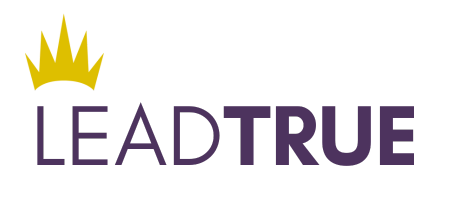6 Ways to Build Diverse Leadership
Statistics, like these shared by Google, show that many companies still lack diverse leadership today. Studies continue to prove that including diverse perspectives at the leadership table provides the creativity needed for business success and growth.
Are you looking at a leadership dashboard that is overwhelming lopsided toward a certain demographic? Are you worried about not having diversity at your leadership level? Are you also concerned about the potential negative effects of inclusion efforts? How do you address these concerns without distracting your people from their jobs or wasting money in the process?
Even the best companies face these concerns. Poorly executed inclusion efforts can be confusing, potentially doing more harm than good. Here are our 6 best practices companies can follow to move the dial toward an inclusive culture and diverse leadership.
Link leadership development and inclusion efforts to business goals. There must be a bona fide reason to include diverse leadership. Do you need to reflect the demographic of your client base? Do you want the innovative and creative solutions that come from diverse perspectives? Do you want your company to be attractive for hiring top talent? Do you want to lead your industry in diversity and inclusion? If you have no business reason to build diverse leadership, then don’t do it. If it makes more sense for the size, culture and focus of your company to be fairly one dimensional, our advice is to simply own it. If you know it's time to be intentional about diversity, then link these efforts to your bottom line and hold your leaders accountable for measuring, managing and delivering a more inclusive culture.
Implement elegantly structured mentorship programs. Mentorship, sponsorship and advocacy work when done well. Mentees need to be invested in the program and willing to grow. Mentors need to be supported on how to fulfill their role successfully. These programs work well when designed for a specific group (like new employees, women or high potential talent) and include leadership development content. There is a balance between the structure of the program with the freedom to develop unique relationship with your mentor.
Clarify leadership competencies. In fast-growing companies leaders are often chosen by the "who-you-know" method, the "up-the-ranks" method, the "who-wants-it" method or some combination. When leaders promote or hire who they know, the candidates are often similar to themselves. When companies promote employees who have done well producing results, they often promote people who are good at doing the job themselves, not necessarily leading others. When they look to who wants the promotions the most, those who are most vocal about are not necessarily the most qualified. Clear leadership competencies focus recruiting, hiring and development on the right qualifications that support sustainable growth of your organization.
Broaden the pool of qualified candidates. It takes something to attract and interview diverse candidates for every role. Some managers might argue that an intentionally inclusive approach slows down a process that is already frustratingly tedious. However, it is necessary to look at the entire recruiting and hiring process to see where it breaks down. Is there diversity reflected in new applicants? Are diverse employees staying with the company? Are diverse employees being promoted at the same rate? This analysis shows you where to look deeper at what's needed to create a diverse organization.
Address organizational fears or internal cultural blocks. This is tricky terrain. Many cultural perceptions are buried in the company's subconscious and not dealt with explicitly. These barriers sound like excuses, and they might be hiding deeper fears. For example, if your company has historically been run (quite successfully) by a certain demographic and there are several talented people like them ready to step into the next generation of leadership roles, the company might say things like, "We hire and promote the best. It's not our fault that the best people in our industry are all [fill-in-the-blank]." There might be a fear that good people won't get their turn in the leadership roles they've worked hard to attain. They might truly believe that diversity is great for the future, but it's never possible now. At this point in a company's evolution, a shift is needed to prioritize the company's long-term success over short-term individual promotions.
Link Resource or Affinity Groups to business outcomes. Many companies feel they can address diversity, inclusion and leadership through volunteer-led affinity groups. While these groups do provide an opportunity to network, learn and enjoy spending time together, they are not usually linked to the company's business results or leadership competencies. Resource and Affinity Groups are perceived as a "nice" or "politically correct" thing to do, yet they do not gain respect by the business as being an imperative investment. When done well, Resource and Affinity Groups can improve engagement and morale, but it takes more than a $5000 budget and a group of passionate volunteers to make these groups relevant.
Share your reactions and experiences below, both about what is working and not working in your organization.
About the Author
Through her business experience, Peg Rowe brings knowledge, wisdom and unique perspective on building high performance teams, creating a collaborative culture, developing leaders and delivering exceptional results. She works seamlessly with all levels of management, across groups or in one-on-one settings.
Her intuition, calm manner and orientation to action, once critical to her leadership, are key assets in her work with clients. Peg takes a practical, strengths-based approach to executive coaching. Practical in that it focuses on the key behaviors required for improved performance. Strengths-based, in that the focus is on what is currently working in the executives leadership style that can be leveraged for improved performance and satisfaction.















Learn more about the importance of prioritizing diversity in this blog article by Lead True Global Leader Peg Rowe.